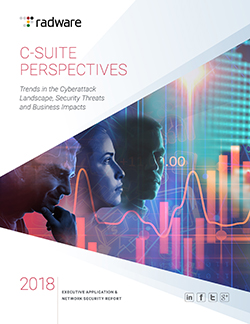DDoS Protection is the Foundation for Application, Site and Data Availability
When we think of DDoS protection, we often think about how to keep our website up and running. While searching for a security solution, you’ll find several options that are similar on the surface. The main difference is whether your organization requires a cloud, on-premise or hybrid solution that combines the best of both worlds. Finding a DDoS mitigation/protection solution seems simple, but there are several things to consider.
It’s important to remember that DDoS attacks don’t just cause a website to go down. While the majority do cause a service disruption, 90 percent of the time it does not mean a website is completely unavailable, but rather there is a performance degradation. As a result, organizations need to search for a DDoS solution that can optimize application performance and protect from DDoS attacks. The two functions are natural bedfellows.

The other thing we often forget is that most traditional DDoS solutions, whether they are on-premise or in the cloud, cannot protect us from an upstream event or a downstream event.
- If your carrier is hit with a DDoS attack upstream, your link may be fine but your ability to do anything would be limited. You would not receive any traffic from that pipe.
- If your infrastructure provider goes down due to a DDoS attack on its key infrastructure, your organization’s website will go down regardless of how well your DDoS solution is working.
Many DDoS providers will tell you these are not part of a DDoS strategy. I beg to differ.
Finding the Right DDoS Solution
DDoS protection was born out of the need to improve availability and guarantee performance. Today, this is critical. We have become an application-driven world where digital interactions dominate. A bad experience using an app is worse for customer satisfaction and loyalty than an outage. Most companies are moving into shared infrastructure environments—otherwise known as the “cloud”— where the performance of the underlying infrastructure is no longer controlled by the end user.
Keeping the aforementioned points in mind, here are three key features to consider when looking at modern enterprise DDoS solutions:
- Data center or host infrastructure rerouting capabilities gives organizations the ability to reroute traffic to secondary data centers or application servers if there is a performance problem caused by something that the traditional DDoS prevention solution cannot negate. This may or may not be caused by a traditional DDoS attack, but either way, it’s important to understand how to mitigate the risk from a denial of service caused by infrastructure failure.
- Simple-to-use link or host availability solutions offer a unified interface for conducting WAN failover in the event that the upstream provider is compromised. Companies can use BGP, but BGP is complex and rigid. The future needs to be simple and flexible.
- Infrastructure and application performance optimization is critical. If we can limit the amount of compute-per-application transactions, we can reduce the likelihood that a capacity problem with the underlying architecture can cause an outage. Instead of thinking about just avoiding performance degradation, what if we actually improve the performance SLA while also limiting risk? It’s similar to making the decision to invest your money as opposed to burying it in the ground.
[You might also like: Marrying the Business Need with the Technology Drive: Recapping It All]
Today you can look at buying separate products to accomplish these needs but you are then left with an age old problem: a disparate collection of poorly integrated best-of-breed solutions that don’t work well together.
These products should work together as part of a holistic solution where each solution can compensate and enhance the performance of the other and ultimately help improve and ensure application availability, performance and reliability. The goal should be to create a resilient architecture to prevent or limit the impact of DoS and DDoS attacks of any kind.

Read the “2018 C-Suite Perspectives: Trends in the Cyberattack Landscape, Security Threats and Business Impacts” to learn more.
Daniel Lakier
Daniel Lakier is VP-ADC globally for Radware. Daniel has been in the greater technology industry for over 20 years. During that time he has worked in multiple verticals including the energy, manufacturing and healthcare sectors. Daniel enjoys new challenges and as such has enjoyed several different roles in his Career from hands on engineering to architecture and Sales.
At heart Daniel is a teacher and a student. He is forever learning and truly has passion for sharing his knowledge. Most recently Daniel left his role as President and CTO of a leading technology integrator where he had spent the better part of 8 years to join the Radware organization.
When Daniel isn’t at the office he enjoys working on the farm and chasing his wonderful daughters.
*** This is a Security Bloggers Network syndicated blog from Radware Blog authored by Daniel Lakier. Read the original post at: https://blog.radware.com/applicationdelivery/2018/09/ddos-protection-is-the-foundation-for-application-site-and-data-availability/





